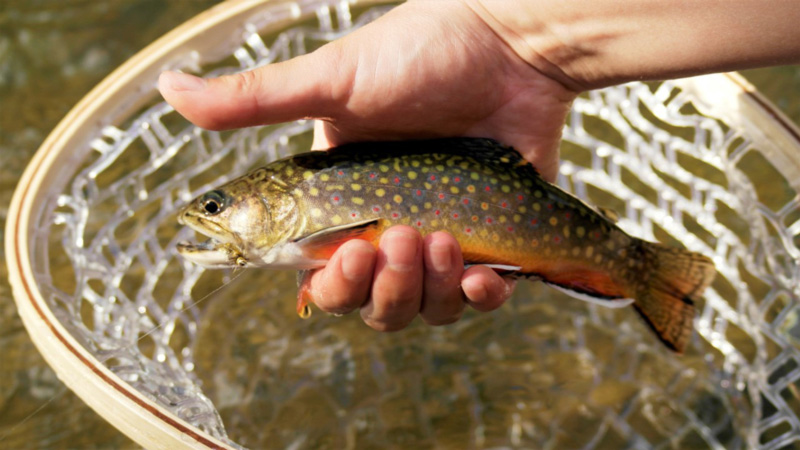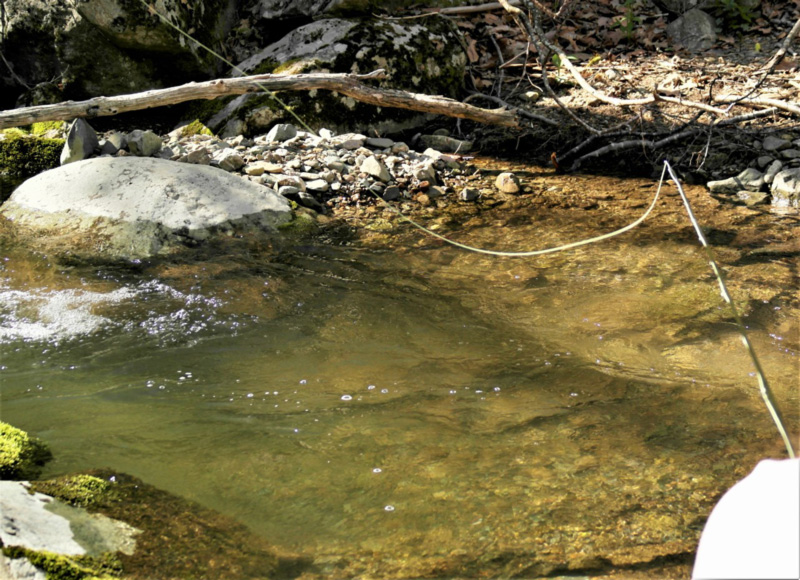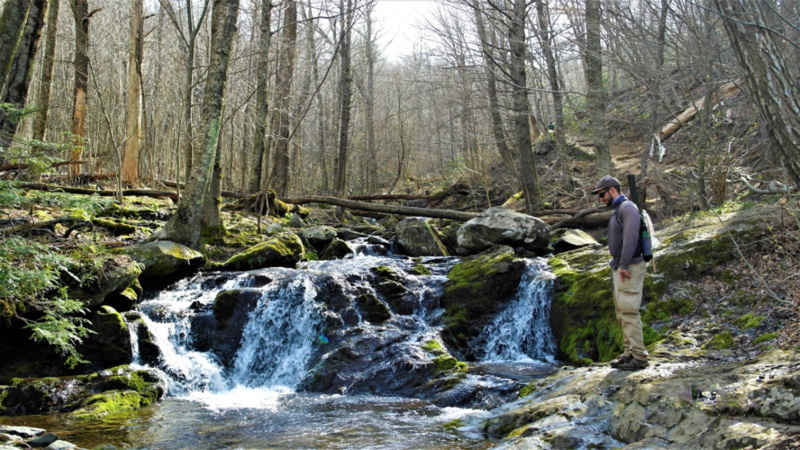In areas with a good population, brook trout are the perfect fish to target for a beginner who wants to get into the world of trout fishing. These fish are native to Eastern Canada and throughout the Northeast US, extending just west of our low-lying coastal region into the higher elevations. During consistent stream conditions, wild brook trout aren’t very difficult to fool. And if you fool one, you can bet there are many more in your area that’ll be fooled. They may be small where we live, but waters with wild brook trout often sustain a substantial number of fish. (Imagine not worrying whether the stream has been stocked or not.) This means you can usually expect to encounter many brook trout during your adventure no matter the time of year. If you want to avoid the trout crowds this spring and summer, take a short trip westward and then take a hike along one of our numerous mountain streams — chances are you’ll have wild brook trout all to yourself.

Where To Fish for Brook Trout
When trying to locate bodies of water that hold brookies, remember that their environment often reflects their diminutive size in that they’re often found in small streams. Interestingly enough, many of these streams are only big enough to support a thriving brook trout population, being too small to support any other sport species. Today, in fact, there are still many small brook trout streams that remain unnamed and never fished just because of how small and unnoticed they are. New stretches of brook trout streams are discovered and designated almost every year in the U.S. Luckily, it doesn’t take a long hike to find great brook trout fishing. There are thousands of miles of designated wild brook trout water to explore and fish, and you can venture as close or as far from the road as you wish.
State Websites, Online Maps, and Local Tackle Shops
Begin your search on your state’s website for their department of freshwater fishing; all of the states in our region have one. This will let you know where brook trout opportunities exist near you. Trout are a heavily regulated species, so there will be a lot of detailed information on this subject. If you’re unsure or confused about certain regulations, contact them to clarify. They often have a wealth of information they’re willing to share.
If there’s a local tackle shop or guide service, contacting or visiting them is also a great move, as it’s a big part of their business to know the local fishing areas. They can usually point you to the fishing opportunities in the area and really jumpstart your success.
Although streams and rivers are some of the most complicated places to fish, regardless of species, don’t let that deter you. Since brook trout are often found in the smallest of streams and rivers, the experience is much less overwhelming than a larger waterway, offering a great learning experience.
Take a close look around you and try to identify the deepest parts of the stream you’re assessing. Keep in mind that “deep” is a relative term. If the average depth of your immediate area is about six inches, but just behind a rock it’s a foot deep, fish that spot. If the stream runs around two feet deep but there’s a small section that’s three to four feet deep, fish there.

While brook trout will be spread throughout the stream, you can usually count on finding them in these deeper sections. In general, the deeper the water the less turbulent the surface is. This could be in the form of a channel that runs through the stretch of stream you’re fishing, or it could be in the form of a pool. Sometimes the deepest part of a section will be around the banks, which can give brook trout the added advantage of hiding under vegetation, making it an excellent spot.
Finding Current Breaks
When scanning a section of a stream you’ll fish, look for structure or any object that redirects the movement of the water. This mostly consists of rocks and boulders in streams and rivers, but includes any piece of wood, vegetation, bridge pilings, or islands that influences the water. Trout love to hide right in or downstream of these structures. Usually, the bigger the structure, the bigger the current break and pool that forms behind it; always fish these areas.
Keep in mind that sometimes these structures won’t be seen on the surface. This is when you’ll have to read the current. This requires pausing for a moment to observe the natural, general flow of the river or stream. If a submerged structure is present, like a rock, sometimes the water will lag and slow down as it flows over the top, creating a “V” shape in the water as the surrounding water moves faster.
Look for Rising Fish
During the warmer months when bugs are active, brook trout will splash the surface when they rise for bugs, particularly flies. This isn’t a fishing anomaly, but a daily occurrence when the bugs and flies come out. If you’re on the water and begin to see flies, start glancing at the surface to watch for any active trout. If you see one splash the surface, then great — you just located one. The goal now is to approach close enough for a cast without it seeing you.
As a side note, different flies can hatch at different times of day, but fishing in the evenings into late evenings is a good strategy for intercepting a hatch. However, during the summer when grasshoppers, crickets, beetles, and other bugs are active, you may see brook trout rising at any time of day. Since these kinds of bugs live on land (terrestrials), look for brook trout to rise near the bank where these little creatures are most likely to fall into the water by accident. If it’s a sunny part of the day and there’s shade under the vegetation, even better.
Fooling a Brook Trout
While fishing for brook trout requires all the same tenets of any other trout species, they’re often easier to fool and more than willing to overlook an imperfection with your lure, bait, or fishing technique. An undisturbed, wild brook trout will usually readily take your bait. (Note that in some waterways in some states, fishing bait isn’t legal and only lure fishing is allowed. Always check the local regs before fishing bait). A simple #12 single hook with a split shot about a foot above will do the trick. Put on a small grub, worm, or any soft plastic resembling the two, and you’re off to a great start. Power bait is a classic where permitted. While natural colors work well for brook trout, stick with bright colors such as white, chartreuse, orange, and green. If the area you’re in allows flies or artificials only, don’t sweat. Add on a bright salmon egg pattern or a bright colored nymph like the local CK nymph (#12 to 18) and then add a float. Place it high enough to make sure the bait drifts near the bottom, and set the hook any time the float stops or goes under. You can also place a split shot between the hook and float to help the bait sink deeper and quicker if you’re fishing quick and deep water. Once you’ve tried your luck at a spot — whether successfully or unsuccessfully — you can then continue the hike, find new spots, and enjoy new brook trout fishing opportunities.

Check Your Regulations
Remember: Trout are highly regulated and it’s important to check not only your state’s regulations, but the regulations for the specific water you plan to fish. Sections of the same stream can have different regulations, so it’s important to understand the difference. A trout permit or stamp may also be required in addition to your state license, so again, check the regulations for the water you plan to fish. Some streams require a special permit granting access and privileges only to that particular water.
- Andrew Courtillet is a freelance writer who simply enjoys fishing. His work has been featured in “On The Water” and “Fur Fish Game” magazines, where he’s shared what he's learned to help you enjoy fishing, too. Feel free to send him a message on his website, andrewcourtillet.com